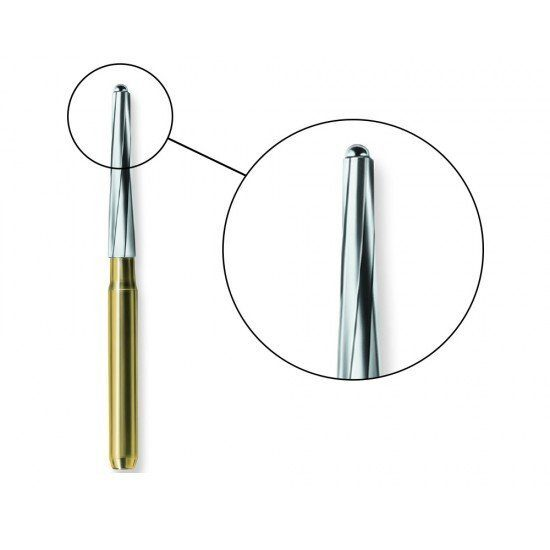Dental burs are an integral component of modern dentistry, playing a crucial role in various procedures. Understanding their importance, evolution, and the choices available is vital for dental professionals. In this article, we delve into the intricate world of dental burs, examining their history, materials, anatomy, types, and the considerations for selecting the right bur. Additionally, we will highlight Boyue, a leading manufacturer in this field.
Introduction to Dental Burs
● Definition and Role in Dentistry
Dental burs are rotary cutting instruments used in conjunction with dental handpieces to perform various procedures, such as cavity preparation, finishing restorations, and removing old fillings. These small but mighty tools come in a variety of shapes and sizes, each designed to perform specific tasks efficiently and precisely.
● Importance in Dental Procedures
The efficiency of dental procedures often hinges on the selection and use of the appropriate dental bur. They enable dentists to perform intricate tasks with precision, minimize procedure time, and enhance patient comfort. The wide variety of burs available allows for customization to meet individual patient needs and procedure requirements.
Historical Evolution of Dental Burs
● Early Use in Tooth Restoration
The use of rotary instruments in dentistry dates back to ancient times, with rudimentary tools being employed for drilling and tooth restoration. However, it was not until the late 19th century that the development of mechanized dental burs began, revolutionizing dental practice.
● Technological Advancements and Variety
With the advent of technology, dental burs have undergone significant advancements. Modern burs are crafted from high-quality materials, offering enhanced durability and precision. The variety of designs and materials ensures that dental professionals have the perfect tool for every task, from conservative preparations to complex restorative procedures.
Materials Used in Dental Burs
● Types of Materials: Steel, Stainless Steel, Tungsten Carbide, Diamond Grit
Dental burs are manufactured from a range of materials, each offering distinct advantages. Steel and stainless steel burs are known for their flexibility and cost-effectiveness. Tungsten carbide burs, favored for their hardness and longevity, are ideal for cutting through tough materials. Diamond grit burs, on the other hand, are perfect for precision cutting and finishing due to their superior abrasiveness.
● Advantages and Durability of Each Material
While steel burs are suitable for soft tissue and delicate procedures, tungsten carbide burs are preferred for their durability and efficiency in cutting hard tissues. Diamond burs, though more expensive, provide unparalleled precision and a smooth finish, making them indispensable in cosmetic and restorative dentistry.
Anatomy of a Dental Bur
● The Head: Function and Types of Blades
The head of a dental bur is the cutting part, available in various shapes and blade configurations. The choice of head design impacts the bur's cutting efficiency and the procedure's outcome. Different blade types cater to specific tasks, such as removing decay, shaping teeth, or smoothing surfaces.
● The Neck: Connection and Design
The neck of the bur connects the head to the shank, allowing for flexibility and control. Its design is crucial for maintaining the stability and balance of the bur during high-speed rotations, reducing the risk of breakage and enhancing procedural precision.
● The Shank: Different Types and Their Uses
The shank is the part of the bur that fits into the dental handpiece. It comes in various designs, including long straight shanks for laboratory use, latch-type shanks for low-speed procedures, and friction grip shanks for high-speed applications. Each type of shank is suited to specific handpieces and procedures, impacting the bur's effectiveness.
Different Types of Shanks
● Long Straight/Handpiece Burs: Characteristics and Applications
Long straight shank burs are primarily used in dental laboratories for denture adjustments and prosthetics fabrication. Their design allows for easy manipulation and broad application across various laboratory tasks.
● Latch-type/Right Angle Burs: Usage in Low-speed Handpieces
Latch-type burs are used with low-speed handpieces, ideal for procedures requiring more torque and less speed, such as caries removal and cavity preparation. Their secure connection ensures stability during use, enhancing the dentist's control.
● Friction Grip Burs: Use in High-speed Procedures
Friction grip burs are the most common type used in high-speed handpieces. They are essential for precise, high-speed cutting and are particularly useful in restorative and cosmetic procedures. Their secure grip and streamlined design enable rapid bur changes and efficient use.
Classification by Shape and Usage
● Common Shapes: Cone, Round, Spear
Dental burs are available in a plethora of shapes, each designed for specific tasks. Cone-shaped burs are excellent for trimming and contouring, while round burs are used for opening cavities and removing decay. Spear-shaped burs, with their pointed tips, are suited for creating initial entry points and detailed work.
● Role of Shape in Specific Dental Treatments
The shape of a dental bur directly influences its application in specific treatments. Selecting the appropriate shape ensures the procedure is carried out efficiently and with minimal trauma to the surrounding tissues, enhancing patient comfort and outcomes.
Specialized Burs and Their Functions
● Round Burs for Decay Removal and Cavity Preparation
Round burs are a staple in decay removal and cavity preparation, allowing for precise excavation without damaging surrounding tissues. Their uniform shape is ideal for enlarging and smoothing cavity preparations.
● Pear Burs for Undercuts and Trimming
Pear-shaped burs are widely used for creating undercuts and trimming restorations. Their tapered design provides excellent control, ensuring smooth transitions and optimal retention in cavity preparations.
● Finishing Burs for Final Restorations
Finishing burs are designed to provide a smooth finish to restorations, eliminating rough spots and achieving a polished surface. They are essential in cosmetic dentistry, where aesthetics are paramount, and the final appearance must be flawless.
Abrasiveness and Grit Levels
● Range of Coarseness for Different Tasks
Dental burs vary in their degree of abrasiveness, with different grit levels catering to specific tasks. Coarse burs are ideal for rapid reduction, while fine grit burs are used for polishing and detailing, offering a high degree of precision in finishing work.
● Impact of Grit on Tooth Surface and Detailed Work
The choice of grit level can significantly impact the procedure's outcome, affecting the smoothness of the tooth surface and the detail work's accuracy. High-grit burs provide a finer finish, essential for cosmetic procedures, whereas lower-grit burs excel in rapid bulk removal.
Choosing the Right Dental Bur
● Factors to Consider: Blade Angle, Head Shape, Grit Abrasiveness
Choosing the right dental bur involves evaluating several factors, including blade angle, head shape, and grit abrasiveness. Each factor influences the bur's performance and procedural outcome, requiring careful consideration to ensure optimal results.
● Impact on Procedure Efficiency and Patient Outcomes
The selection of dental burs directly affects the efficiency of the procedure and the quality of the patient outcome. Using the appropriate bur enhances precision, reduces procedure time, and minimizes patient discomfort, leading to improved satisfaction and treatment success.
Conclusion: The Future of Dental Burs
● Innovations and Ongoing Research
The field of dental burs is continuously evolving, with ongoing research and innovations paving the way for more advanced tools. Future developments promise enhanced precision, efficiency, and durability, transforming dental practice for the better.
● Predictions for Future Developments in Dental Tools
As technologies such as 3D printing and nanotechnology advance, dental burs will likely become even more precise and customized to individual patient needs. The future of dental tools is bright, promising better outcomes and improved patient care.
Boyue: A Leader in Dental Bur Manufacturing
Jiaxing Boyue Medical Equipment Co., Ltd is a leading manufacturer specializing in precision grinding technology for dental and medical rotary cutting tools. With over 23 years of experience, Boyue offers a full range of products, including dental burs, files, and bone drills, for surgical and laboratory use. The company prides itself on its skilled workforce, advanced machinery, and commitment to quality, making it a top choice for dental professionals worldwide. Boyue's dedication to innovation and excellence ensures its products remain competitive in the global market.

Post time: 2024-12-10 11:23:06


